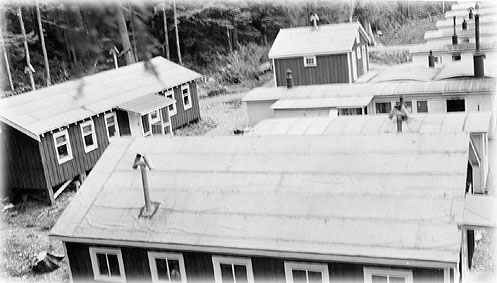Essential Question: Explain how Alaska’s location was considered ‘strategic’ during World War II. What were the war activities/events that supported the perspective of ‘strategic’ Alaska?
As I recall from one of our first modules about place, Alaska was thought to be the center of the world because of its equal distance to other major national and international cities (London, Tokyo, New York City, etc.) While it may not actually be the center of the world, its location was still strategic during World War II.
“In fact, Alaska’s strategic location on a Great Circle route from the west coast of North America to Asia was well known” (
Explore Alaska!). As Japan started to build its military in preparation for war (possibly against China or even America), the United States kept an eye on the distance between Alaska and the Japanese islands. Along with Hawaii and the west coast continental states, Alaska was part of the forefront of the United State’s Pacific campaign.
Even though Alaska didn’t officially become a state until 1959, the onset of WWII proved that the area was a strategic and valuable asset to the United State’s war efforts. According to the
Explore Alaska! blog, the United States government had been planning on building a defense line from Panama to Alaska as early as the 1920’s. The need for military bases in Alaska during WWII was expressed by delegate Anthony Dimond, who stated, “I say to you, defend the United States by defending Alaska” (
Alaska at War, pg. 199).
 |
Kodiak Naval Base
U.S. Army Center of Military History |
An example of some strategic activities includes the construction of aviation facilities. The locations of Dutch Harbor, Kodiak, and Sitka became the very sites for tactical building. Admiral Arthur J. Hepburn called for aviation facilities at these three towns for amphibious patrol aircraft to land, as well as submarine use. The admiral especially identified l
ocation of these three sites as “vital importance in time of war” (Alaska at War, pg. 5).
In the piece “American National Strategy in the East Asian and Pacific War: The North Pacific,” author William A. Jacobs asserts that “the events in Alaska and the North Pacific were ultimately more significant for the European theater of the war than for the Asian and Pacific” (
Alaska at War, page 13).
Examine Question: Explain the purpose of the Aleut evacuation and give at least two examples of how the evacuation affected the Aleuts of Alaska.
When the United States decided to intern Japanese-Americans during WWII, the government felt that the decision was made for the safety of others. The internment of Aleuts, however, was supposedly done for their own safety.
*I realize that the words ‘evacuation’ and ‘internment’ may have different connotations, but I have chosen to use ‘internment’ here because I feel that calling these actions as ‘evacuations’ make it sound voluntary and non-discriminatory, especially after reading about the lasting effects they had on the Aleuts.
Aleutians from nine villages along the southwest islands of Alaska were evacuated due to Japan’s military moving closer to the land. Many buildings, including homes and churches, were set on fire so that they could not fall into Japanese hands (
National Park Service). The Aleutians were taken to Southeast Alaska, and placed in cramped buildings that were ill-suited to hold the number of people. Often there would be no electricity or plumbing.
 |
Barracks at Ward Lake Camp
Sitnews |
One way that the Aleuts were affected by the internment was the spread of disease. According to the
National Park Service, medical care was almost nonexistent for the interned, and authorities often dismissed complaints of illness. Tuberculosis and pneumonia were persistent among the very young and old. In the four camps (Funter Bay, Killisnoo, Ward Lake, and Burnett Inlet), over 70 people died from disease.
The internment also forced the loss of some of the Aleutians’ culture. When the old passed away from disease, the Native people also lost their traditional ways of learning. The elder Aleuts traditionally passed down knowledge through stories. Villages and homes were also destroyed as well. According to the
Explore Alaska! blog, many Aleuts returned home after the war to find their communities damaged by years of disuse or by occupation of American forces. Many villages were abandoned because of the damage. It wasn’t until 1988 that restitution was made for the rebuilding of destroyed buildings.
Evaluation
I have always been fascinated with the history of World War II, so to learn about Alaska’s involvement was extremely interesting. When I took American History in both high school and college, Alaska was never mentioned, so I’m glad to now have this new insight. I would have liked to have more online resources available about the Aleut evacuation, however.
Blog Reviews
Niki brought to my attention how the Eagle River area (my home!) was used by the Army to test weapons that contain phosphorus, and is now one of the most polluted sites in the nation. I did not know this at all!
Crystal talked about the building of the Alaskan Highway, and how it was a “triumph over racism” because African-American engineering units working alongside white engineering units.
Chelsey pointed out that the occupation of Alaska by the Japanese was strategic because it had a psychological impact on Americans – the war was now in our own backyard.















